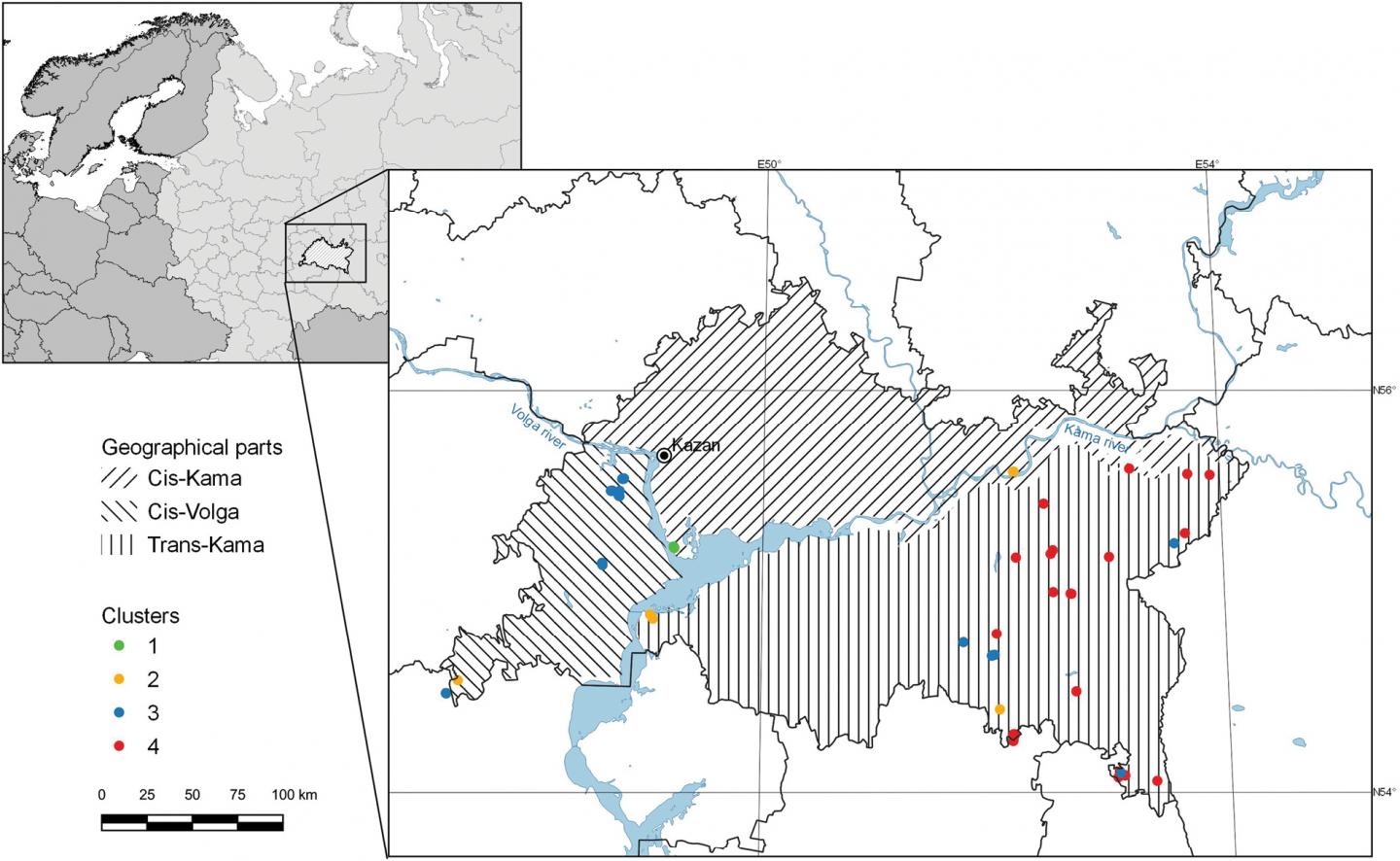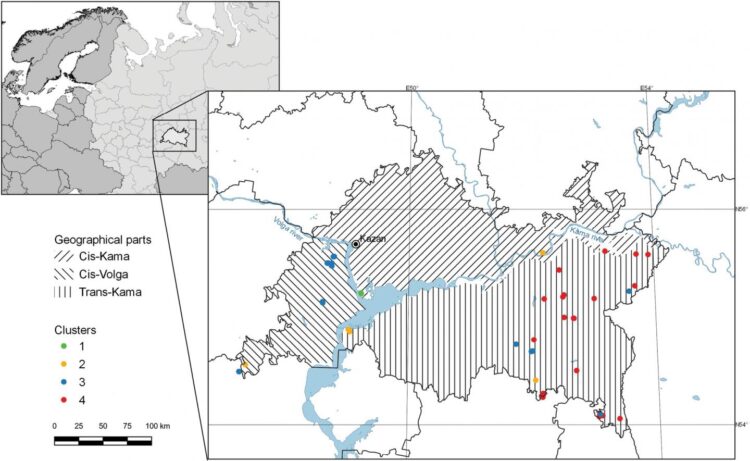Kazan Federal University scientists offered a new approach to classification of Tatarstan vegetation in a recent paper.

Credit: Kazan Federal University
Scientific classifications of forest vegetation on the territory of the former USSR, including the Republic of Tatarstan, previously used the dominant approach, traditional for northern countries, taking into account the dominance degree of one or another species in the main tree layer, or similarity in the composition of subordinate layers with the identification of cycles and series of associations. Currently, the classification of plant communities of the Republic of Tatarstan is made on a dominant-determinant basis and is reflected, for example, in the vegetation map of the Atlas of the Republic of Tatarstan and other publications.
The classification of vegetation according to the Braun-Blanquet method takes into account the entire floristic composition of the community and is used mainly in European countries. Since many communities in the European part of Russia are similar to European ones, it is logical to classify our communities in this system as well. In Soviet phytosociology, the Braun-Blanquet system began to be actively used only in the early 1980s, and since 2000, the Russian followers of Braun-Blanquet have authored dozens of articles on vegetation in different regions. In 2005, a preliminary prodromus of vegetation syntaxa of the Raifa site of the Volga-Kama natural biosphere reserve was published.
Therefore, the authors decided to develop a classification of plant communities in the Republic of Tatarstan based on the Braun-Blanquet system.
Steppe oak forests are unique ecotonic communities of great floristic diversity and conservation value; in addition, they are simply gorgeous, so the authors chose these communities to start with. This type of community is quite rare for the territory of Tatarstan. To find it, scientists have developed a mathematical model of potential habitats of steppe oak forests on the territory of the Republic of Tatarstan based on data from other regions. This made it possible to find more points of their habitats in one season than in the entire previous history of study.
The aim of the study is to develop a syntaxonomic classification of xero-mesophytic broad-leaved oak forests of the Republic of Tatarstan with a preliminary analysis of their unique ecological features. A total of 91 phytosociological relevés were processed. They were classified using a modified TWINSPAN algorithm (this is one of the cluster analysis options). Diagnostic, constant and dominant species were identified, which are necessary to determine the syntaxonomic position of these communities. Two new associations were validly (i.e. according to all accepted rules) described: Astragalo ciceri-Quercetum roboris and Sanguisorbo officinalis-Quercetum roboris, which belong to the class Quercetea pubescentis. The uniqueness of these communities was shown in relation to xero-mesophytic European oak forests, oak communities common in the western regions of European Russia (Bryansk, Kursk), as well as steppe oak forests of the Cis-Urals and the Southern Urals.
To date, only these 2 associations from the territory of Tatarstan have been validly published in the scientific press.
The study of the spatio-temporal dynamics of biodiversity is one of the priority tasks of fundamental ecology and biogeography. Changes in the distribution boundaries of tree species are slower than climate change. However, plant communities that have formed at the border of their distribution are the most sensitive to slow and humanly imperceptible climate changes. One of such most “sensitive” objects are steppe oak forests – a widespread and ecologically and floristically delineated type of deciduous forests in Europe and, in particular, in Russia. They have well-pronounced ecological preferences and a relatively narrow ecological amplitude, which makes it possible to consider them as significant indicators of climate change.
In the course of the work in general, as well as the preparation of the manuscript of the article in particular, the researchers got acquainted with colleagues studying these types of communities both in Europe and in Russia. They realized that when the study area is relatively small (for example, on the scale of a Russian region or a separate European country), the classification becomes very confusing and many contradictions arise. Therefore, it was decided to combine the material and carry out a unified revision of all European steppe forests. This project has already started. It includes scientists from the Czech Republic, Austria, Poland, Slovakia, Romania, as well as Russian regions: Bryansk Oblast, Rostov Oblast and the Republic of Bashkortostan. Results are expected in 2023.
###
Media Contact
Yury Nurmeev
[email protected]
Original Source
https:/
Related Journal Article
http://dx.





